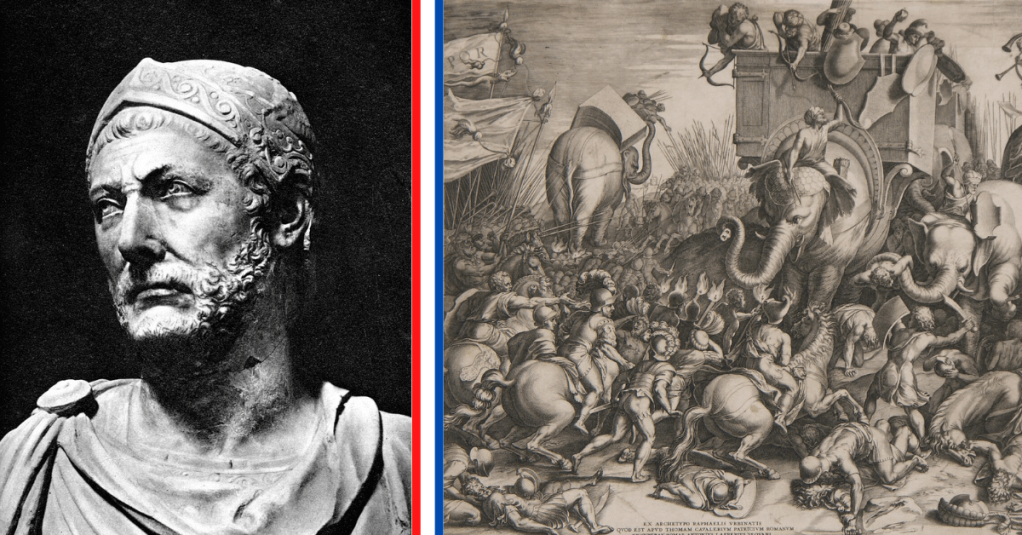Venture back into a world of clashing empires and legendary warfare, where the name Hannibal resonates with strategic brilliance and unyielding courage. Born in 247 B.C.E. in North Africa, the military mastery of Hannibal Barca is the stuff legends are made of. Not only would his tactics shape battles back then, but they also left an indelible mark on the very essence of warfare. How did he become a symbol of strategic genius, and what can modern warriors learn from his relentless spirit? Hannibal’s innovative tactics and fearless leadership continue to be a source of inspiration and study in military academies today. That’s because it’s easy to translate his tactics into the contemporary ethos of adaptability and resilience. Here’s how he did it.
Destined for greatness
The son of the esteemed Carthaginian general Hamilcar Barca, young Hannibal was groomed for a life filled with extraordinary challenges. His story, painted by the pens of Greek historian Polybius and Roman historian Livy, is a riveting journey through time. In 221, the assassination of Hasdrubal thrust Hannibal into the spotlight. By 26, he ascended to commander in chief, a role history would forever remember. His gaze turned to Spain, where he secured alliances through marriage and subdued tribes like the Olcades and Vaccaei. In 219, the siege of Saguntum sparked the seeds of the Second Punic War. Hannibal was more than ready to stand unbroken against Rome’s demands.
The march into Gaul
In the winter of 219–218, Hannibal’s strategic brilliance takes center stage. Trusting Hasdrubal to guard Spain and North Africa, Hannibal gathered around 90,000 troops and embarked on his grand march. Crossing the Pyrenees, engaging local tribes, and pressing forth with 37 mighty elephants, his northward push was undeterred. Hannibal’s approach to warfare was both unconventional and highly effective. Can you imagine leading such a force, facing the unknown with unwavering determination?

Crossing the Rhône
When General Scipio blocked Hannibal’s coastal route, he set the stage for a monumental clash. Employing coracles, boats, and earth-covered rafts, Hannibal’s forces crossed the river, showcasing his unparalleled ingenuity. Crossing the Rhône was a feat that demonstrated Hannibal’s ability to adapt to unexpected challenges. Rather than seeing this as a setback, he saw a way to turn a geographical obstacle into an opportunity. His tactics at the Rhône River would later be reflected in military strategies worldwide, emphasizing the importance of adaptability and resourcefulness in the face of adversity.
Stepping into destiny
The journey began with opposition from the Allobroges, leading to ambush and heavy losses. In a treacherous ambush at a “white-rock” location, Hannibal adapted, guiding his troops by night through a narrow gorge, outwitting his pursuers. While the Alps’ exact location remains elusive, shrouded in mystery, the legend still lives on. What we know is the grueling journey’s outcome. With 25,000 infantry, 6,000 cavalry, and a handful of his original elephants, Hannibal realized his destiny. Meanwhile, the plains west of the Ticino River became the stage for epic confrontations. Hannibal’s Numidian cavalry claimed a significant victory against Scipio’s army. In a calculated move at Lake Trasimene, Hannibal’s troops annihilated the Roman forces, a victory that reverberated through history.
Exile and last stand
Despite accusations in Carthage and defeats against the Romans, Hannibal’s resourcefulness never waned. His engagement in warfare against Rome’s ally, King Eumenes II, even saw him employ early biological warfare, hurling baskets of snakes into enemy vessels. In his final act of rebellion, facing treachery and extradition, Hannibal chose to ingest poison, a symbol of his unwavering defiance against Rome.
The legacy of Hannibal Barca stands as an eternal beacon for warriors, tacticians, and leaders alike. His genius in strategy, leadership, and adaptability continues to inspire modern military doctrines. Hannibal used terrain and psychological warfare with skill. He faced overwhelming odds with courage. His lessons guide today’s armed forces. His unyielding spirit is a testament to the core values warriors hold today. He has profoundly impacted how wars are fought and won. Hannibal’s name echoes in history. It shapes the living traditions of military strategy and valor in our world.


